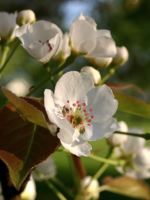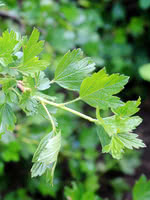Mon-Fri 9am - 5pm Mountain time
Ussurian Pear (Siberian) vs Northern Gooseberry
Pyrus ussuriensis
Ribes oxyacanthoides
NOT AVAILABLE THIS SEASON - MIGHT RETURN
NOT AVAILABLE THIS SEASON - MIGHT RETURN
Ussurian Pear is the most cold hardy of all pear species. It is frequently used as a rootstock or as a pollinizer for other pear varieties. The pinkish-white flowers that bloom in the spring and the striking fall colours make it well-suited as an ornamental addition to your landscape.
Ussurian Pear can also be used for forming hedges as it tends to branch quite low.
While the Ussurian Pear is considered self-pollinating, planting with another pear variety will increase yields. Can be paired with Krazulya Pear or Beedle Pear.
Northern Gooseberry is a small, ornamental quality native shrub with prickly stems. You can plant it anywhere you'd plant Prickly Rose or Common Wild Rose, such as your yard.
Most people find Northern Gooseberry berries a bit tart for significant fresh eating but they are good for baking, wine or jam.

